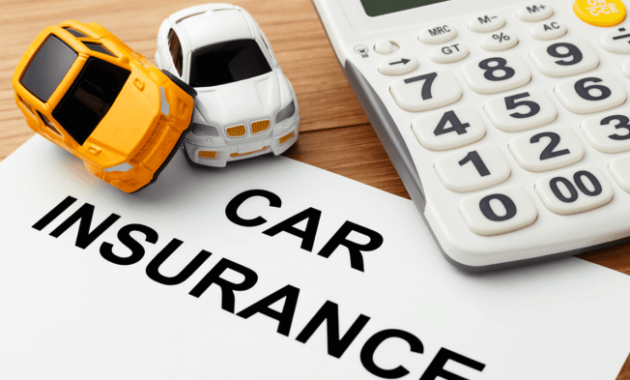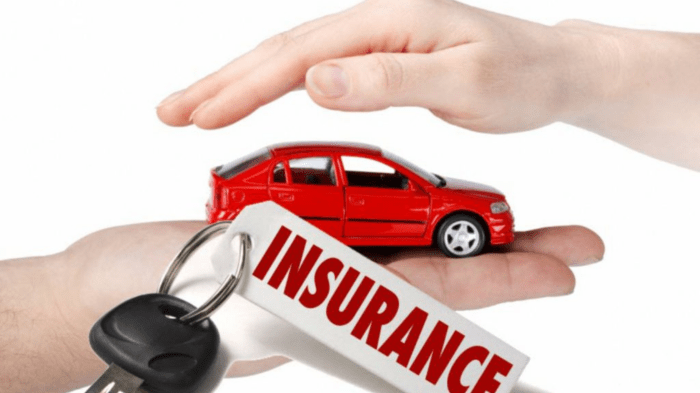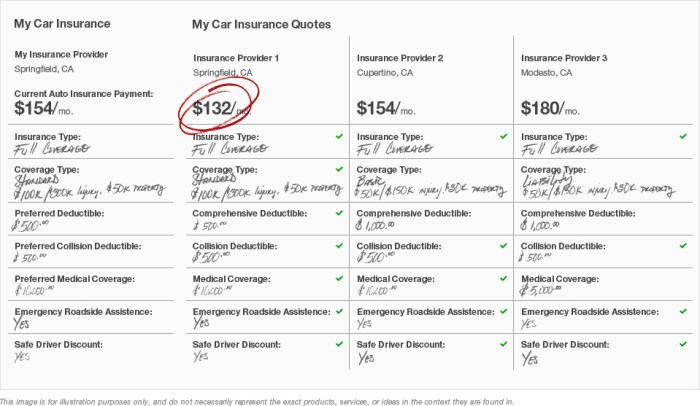
Navigating the world of auto insurance can feel like deciphering a complex code. With a myriad of providers, coverage options, and pricing structures, finding the best policy for your needs requires careful consideration. This guide simplifies the process, providing a clear and concise overview of the key factors to consider when comparing auto insurance policies, empowering you to make informed decisions and secure the most suitable coverage at the best possible price.
From understanding the impact of your driving history and credit score to comparing coverage types and evaluating different insurance providers, we’ll explore every facet of the process. We’ll equip you with the knowledge to confidently navigate the complexities of auto insurance and find a policy that perfectly aligns with your individual circumstances and budget.
Types of Auto Insurance Coverage

Choosing the right auto insurance policy can feel overwhelming, given the variety of coverage options available. Understanding the different types of coverage is crucial to ensuring you have adequate protection in the event of an accident or other unforeseen circumstances. This section will break down the key types of auto insurance coverage, highlighting their differences and benefits.
Liability Coverage
Liability coverage protects you financially if you cause an accident that results in injuries to others or damage to their property. It covers the costs of medical bills, lost wages, and property repairs for the other party involved. Liability coverage typically comes in two parts: bodily injury liability and property damage liability. The amounts are expressed as limits, such as 100/300/100, meaning $100,000 per person for bodily injury, $300,000 total for all bodily injuries in a single accident, and $100,000 for property damage. The minimum liability limits required vary by state, but it’s wise to carry higher limits than the minimum to protect yourself against significant financial losses.
Collision Coverage
Collision coverage pays for repairs or replacement of your vehicle if it’s damaged in an accident, regardless of who is at fault. This means that even if you cause the accident, your insurance will cover the damage to your car. The deductible, the amount you pay out-of-pocket before the insurance coverage kicks in, will affect your payout. For example, a $500 deductible means you pay the first $500 of repair costs.
Comprehensive Coverage
Comprehensive coverage protects your vehicle against damage caused by events other than collisions, such as theft, vandalism, fire, hail, or falling objects. Like collision coverage, it involves a deductible. This type of coverage is particularly important for newer vehicles, as the repair costs can be substantial.
Uninsured/Underinsured Motorist Coverage
Uninsured/underinsured motorist (UM/UIM) coverage is crucial because it protects you if you’re involved in an accident caused by a driver who is uninsured or whose insurance coverage is insufficient to cover your losses. This coverage can pay for your medical bills, lost wages, and vehicle repairs, even if the at-fault driver doesn’t have adequate insurance. Many states require a minimum level of UM/UIM coverage.
Personal Injury Protection (PIP) Coverage
Personal Injury Protection (PIP) coverage pays for your medical expenses and lost wages, regardless of who is at fault in an accident. It also often covers medical expenses for your passengers. Some states mandate PIP coverage, while others offer it as an optional add-on. PIP can be especially beneficial in situations where medical bills are high, regardless of fault determination.
Comparison of Coverage Options Across Providers
Different insurance providers offer varying coverage options and pricing. It’s essential to compare quotes from multiple insurers to find the best value for your needs. For example, one company might offer lower premiums for liability coverage but higher premiums for collision, while another might have a different pricing structure. Factors such as your driving record, age, location, and the type of vehicle you drive will all influence the cost of your insurance. Consider comparing quotes from at least three to five different insurers before making a decision. The following table illustrates potential differences:
| Coverage Type | Provider A | Provider B | Provider C |
|---|---|---|---|
| Liability (100/300/100) | $500/year | $600/year | $450/year |
| Collision ($500 deductible) | $300/year | $250/year | $350/year |
| Comprehensive ($500 deductible) | $200/year | $220/year | $180/year |
Understanding Policy Details and Fine Print

Choosing the right auto insurance policy involves more than just comparing prices. A thorough understanding of the policy’s details and fine print is crucial to ensure you’re adequately protected and avoid unexpected costs or disputes down the line. Failing to carefully review your policy can lead to significant financial burdens in the event of an accident or claim.
Common Exclusions and Limitations
Auto insurance policies often contain exclusions, which are specific events or circumstances not covered by the policy. Understanding these exclusions is vital to prevent disappointment during a claim. Common exclusions include damage caused by wear and tear, damage from driving under the influence of alcohol or drugs, and damage resulting from intentional acts. Limitations, on the other hand, restrict the amount or scope of coverage. For example, there might be a limit on the amount paid for rental car reimbursement after an accident, or a deductible that must be met before coverage kicks in. It’s important to carefully read the section outlining exclusions and limitations to know precisely what is and isn’t covered. For instance, a policy might exclude coverage for damage to a vehicle while it is being used for racing, or for injuries sustained while operating a vehicle without a valid driver’s license.
Potential Hidden Costs and Fees
Beyond the premium, several hidden costs can inflate the overall cost of your auto insurance. These can include administrative fees, processing fees, or penalties for late payments. Some policies might also have fees associated with specific services, such as roadside assistance or additional drivers. Understanding these potential additional costs is key to accurately budgeting for your auto insurance. For example, a policy might charge a fee for changing your address or adding a driver to your policy. Furthermore, a late payment could result in a significant penalty added to your next premium.
Impact of Policy Language on Claims Payouts
The language used in your policy directly impacts how claims are processed and paid. Ambiguous or poorly defined terms can lead to disputes and reduced payouts. For instance, a policy might define “accident” in a very specific way, potentially excluding certain events from coverage. Similarly, the definition of “reasonable and customary charges” for repairs can influence the amount the insurer will pay. A careful review of the policy’s definition of key terms is therefore essential. Consider a scenario where a policy defines “collision” narrowly, potentially excluding a claim where your vehicle was damaged in a low-speed incident without direct contact with another vehicle.
Understanding Common Insurance Policy Terminology
Navigating insurance policy language can be challenging due to its technical nature. Familiarizing yourself with common terms will significantly improve your understanding. For example, understanding the difference between “liability” and “collision” coverage is essential. Liability coverage protects you if you cause an accident, while collision coverage protects your vehicle regardless of fault. Other key terms include deductible (the amount you pay out-of-pocket before insurance coverage begins), premium (the amount you pay for your insurance), and comprehensive coverage (coverage for damage not caused by a collision, such as theft or vandalism). A glossary of terms, often included in the policy or available on the insurer’s website, can be a valuable resource.
Last Recap

Ultimately, comparing auto insurance involves a multifaceted assessment of your individual needs, driving habits, and financial situation. By carefully considering the factors Artikeld in this guide – from coverage types and provider reputation to cost-saving strategies and policy details – you can confidently navigate the insurance landscape and secure a policy that offers optimal protection at a competitive price. Remember, understanding your options and asking questions are crucial steps towards making an informed decision that safeguards your financial well-being and provides peace of mind on the road.
Popular Questions
What is the difference between liability and collision coverage?
Liability coverage pays for damages you cause to others in an accident. Collision coverage pays for damage to your vehicle, regardless of fault.
How often should I review my auto insurance policy?
At least annually, or whenever there’s a significant life change (new car, address, etc.).
Can I get my insurance rates lowered if I have a good driving record?
Yes, many insurers offer discounts for drivers with clean driving records. Provide proof of your driving history to your insurer.
What is a deductible?
A deductible is the amount you pay out-of-pocket before your insurance coverage kicks in.
What is SR-22 insurance?
SR-22 insurance is proof of financial responsibility required by some states after serious driving violations. It certifies you have the minimum required liability coverage.